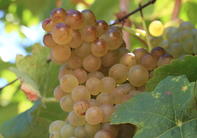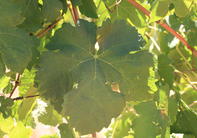Description
Roussanne is a white wine variety originally from the Rhône wine region in France. The name is probably derived from the French word ‘roux’ (red) as it refers to the reddish colour of the berries when ripe. It is a grape that adds acidity, richness and perfume when blended with other varieties such as Marsanne.Origins
FranceOther Names
Roussanne has 26 synonyms such as Barbin, Bergeron Fromental and Rebellot. In California, it was confused with Viognier, but there is no relation between the two varieties. The pink-skinned Roussanne du Var and the Roussette grape might have similar sounding names, but is also unrelated to Roussanne. In South Africa, the cultivar is registered as ‘Roussanne’.Production in South Africa
Clones were imported in 2000 by Simon Barlow of Rustenberg in Stellenbosch who also made the first single varietal wine. About 75ha Roussanne is planted in South Africa except for the regions of Northern Cape, Robertson and Worcester. Notable plantings include Paarl (27ha) Malmesbury (16ha) and Stellenbosch (11ha).Growth and Ripening
Roussanne needs a dry sunny climate to fully ripen and is a shy bearer (6-8 ton/ha) even under optimum growing conditions. It is a labour intensive cultivar. In California it was found that grapes are very sensitive to sunlight and thinning the leaves to ensure even exposure of all bunches helped to improve even ripening.
Roussanne’s variable ripeness means it has to be picked multiple times. – hand harvesting is thus preferred. The variety tends to ripen at higher potential alcohol levels. It is therefore important to manage the alcohol content of the wine. Roussanne is ready for harvest in the early season – just after Sauvignon Blanc.
Berries and Leaves
Berries are small and round and amber-coloured when ripe. The leaves are medium in size, deeply five-lobed with broadly rounded teeth.
Pests and Diseases
Roussanne is very sensitive to powdery mildew and prone to wind damage which can limit yields.Use
In South Africa it is available as a single varietal wine, but these are very expensive. It is combined with Marsanne and Viognier to create a white blend that is perfumy and spicy, yet fruity.
It is prone to oxidation. Roussanne’s combination of richness, minerality and acidity, lends it well to aging - up to and over ten years. The wine also benefits from wood treatment – either barrel fermentation or ageing in oak.

